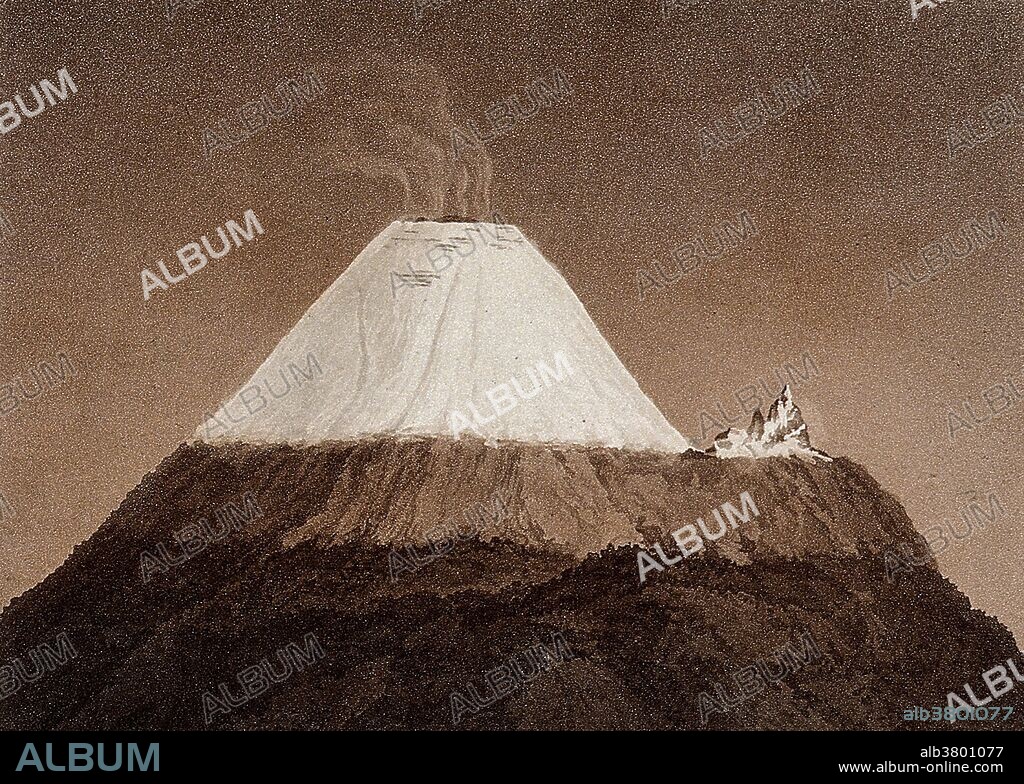alb3801077
Mount Cotopaxi, after Humboldt, early 1800s

|
Añadir a otro lightbox |
|
Añadir a otro lightbox |



¿Ya tienes cuenta? Iniciar sesión
¿No tienes cuenta? Regístrate
Compra esta imagen.
Selecciona el uso:

Título:
Mount Cotopaxi, after Humboldt, early 1800s
Descripción:
Ver traducción automática
Mount Cotopaxi, Equador, snowcapped. Aquatint by F. Arnold after Johann Georg Gmelin after Alexander von Humboldt. Humboldt (1769-1859) was a Prussian geographer, naturalist and explorer. Between 1799 and 1804, Humboldt travelled extensively in Latin America, exploring and describing it for the first time in a manner generally considered to be a modern scientific point of view. His quantitative work on botanical geography laid the foundation for the field of biogeography. His description of the journey was written up and published in an enormous set of volumes over 21 years. He was one of the first to propose that the lands bordering the Atlantic Ocean were once joined (South America and Africa in particular). Later, his five-volume work, Kosmos (1845), attempted to unify the various branches of scientific knowledge. He thought an approach to science was needed that could account for the harmony of nature among the diversity of the physical world.
Crédito:
Album / Science Source / Wellcome Images
Autorizaciones:
Modelo: No - Propiedad: No
¿Preguntas relacionadas con los derechos?
¿Preguntas relacionadas con los derechos?
Tamaño imagen:
3600 x 2570 px | 26.5 MB
Tamaño impresión:
30.5 x 21.8 cm | 12.0 x 8.6 in (300 dpi)
Palabras clave:
AMERICA LATINA • ARTE • DIBUJO • EXPLORACION • GEOGRAFIA • GEOLOGIA • HISTORIA • HISTORICO • IBEROAMERICANA • ILUSTRACION • LATINOAMERICA • LATINOAMERICANA • LATINOAMERICANO / A • LATINOAMERICANO • MONTANA • MONTAÑA • OBRA DE ARTE • PAISAJE • PAISAJES • SIGLO XIX • VOLCAN • VON HUMBOLDT
 Pinterest
Pinterest Twitter
Twitter Facebook
Facebook Copiar enlace
Copiar enlace Email
Email
